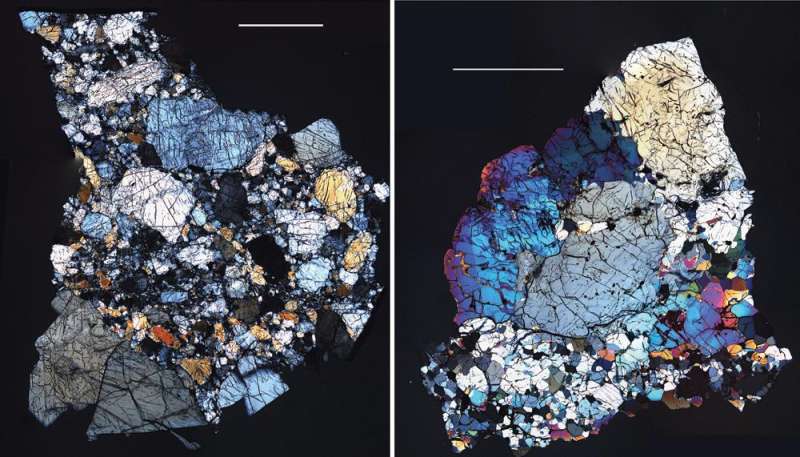Credit & Copyright: NASA /
JPL-Caltech /
Hap McSween (Univ. Tennessee),
A. Beck and T. McCoy (Smithsonian Inst.)
Explanation:
These
colorful images are of thin slices of meteorites viewed through a
polarizing microscope.
Part of the group classified as HED meteorites
for their mineral content (Howardite, Eucrite, Diogenite), they likely
fell
to Earth from 4 Vesta,
the mainbelt asteroid currently being explored by NASA's
Dawn spacecraft.
Why are they thought to be from Vesta?
Because the HED meteorites have visible and infrared spectra
that match the spectrum of
that
small world.
The hypothesis of their origin on Vesta
is also consistent with data from
Dawn's ongoing observations.
Excavated
by impacts, the diogenites shown here
would have originated deep within the crust of Vesta.
Similar rocks
are also found in the lower crust of planet Earth.
A sample scale is indicated by the white bars,
each 2 millimeters long.
1999 2000 2001 2002 2003 2004 2005 2006 2007 2008 2009 2010 2011 2012 2013 2014 2015 2016 2017 2018 2019 2020 2021 2022 2023 2024 2025 |
Январь Февраль Март Апрель Май Июнь Июль Август Сентябрь Октябрь Ноябрь Декабрь |
NASA Web Site Statements, Warnings, and Disclaimers
NASA Official: Jay Norris. Specific rights apply.
A service of: LHEA at NASA / GSFC
& Michigan Tech. U.
|
Публикации с ключевыми словами:
Vesta - meteorit - Веста - метеорит - поляризация света
Публикации со словами: Vesta - meteorit - Веста - метеорит - поляризация света | |
См. также:
Все публикации на ту же тему >> | |
